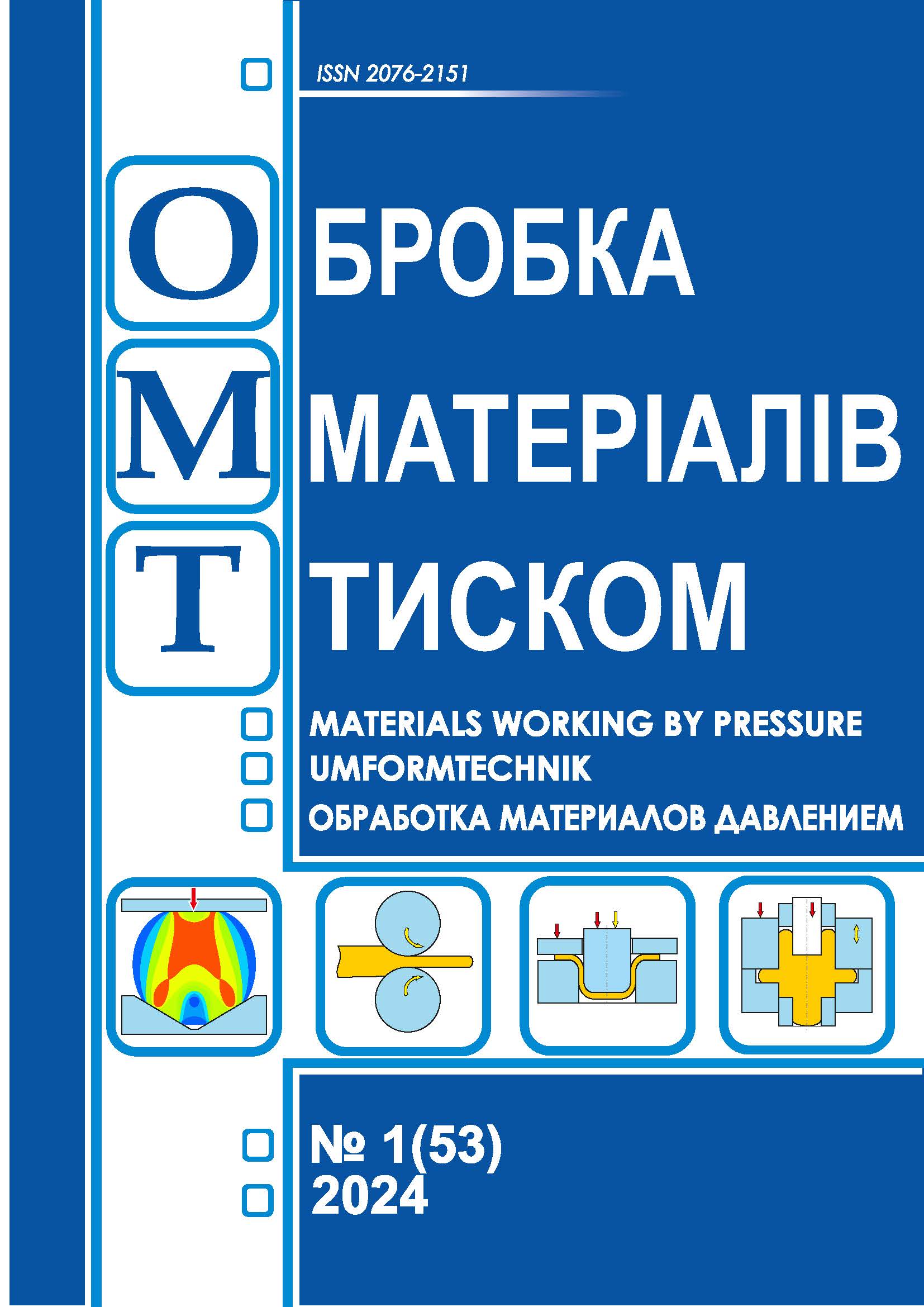Theoretical and experimental investigation on the process of separating rolled pipes using an eccentric torsion scheme
DOI:
https://doi.org/10.37142/2076-2151/2024-1(53)88Keywords:
separation, eccentricity, torsion, pipe, moment, quality.Abstract
Karnaukh S.
Theoretical and experimental investigation on the process of separating rolled pipes using an eccentric torsion scheme
The work presents the results of theoretical and experimental studies of the energy-power parameters of the separation process, the geometric accuracy of pipe-part blanks using the «eccentric twisting» method. A mathematical model of a device with a «crank-circular» mechanism for cutting pipes by «eccentric twisting» has been developed. The technological process of cutting pipes by «eccentric twisting» was simulated using the DEFORM software package. To verify the results of theoretical calculations, experimental studies of pipe separation were conducted on an original design installation. The cut tubular work-piece have satisfactory geometric accuracy. The obtained results of experimental studies are in good agreement with the theoretical data calculated using the proposed mathematical model and the specialized program DEFORM. The maximum differences between the cutting torque values obtained theoretically and experimentally do not exceed 6%. The theoretical results were slightly underestimated due to the need for more accurate frictional accounting in rotating pairs, as well as some discrepancy in the mechanical properties of the material of experimental samples with the material from the base steels of the DEFORM program. For the industrial implementation of research results, a design of an installation with a wedge-hinged drive with a concave wedge in combination with a «crank-circular» mechanism for separating pipes by the «eccentric torsion» scheme is proposed. The wedge-hinged mechanism with a concave wedge has large support surfaces, a small height of the links in the direction of the working force, which provides less elastic deformation and machine dynamics and increases the utilization coefficient of forging and pressing equipment. At the same time, the developed support area of the connecting rod in the slider of the «crank-circular» mechanism reduces the specific forces in this support and contributes to the damping of vibrations, which, combined with a small deformation zone, leads to high dynamic stability and absence of rocking on the foundation.

